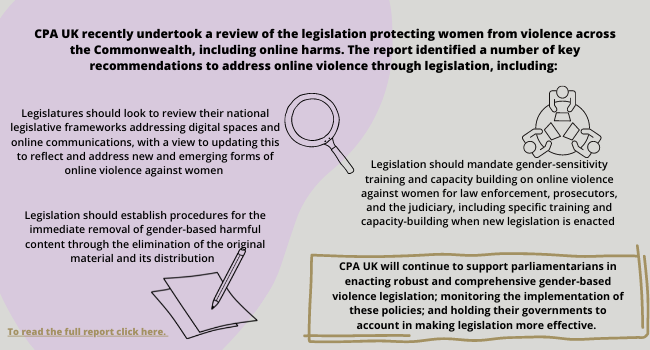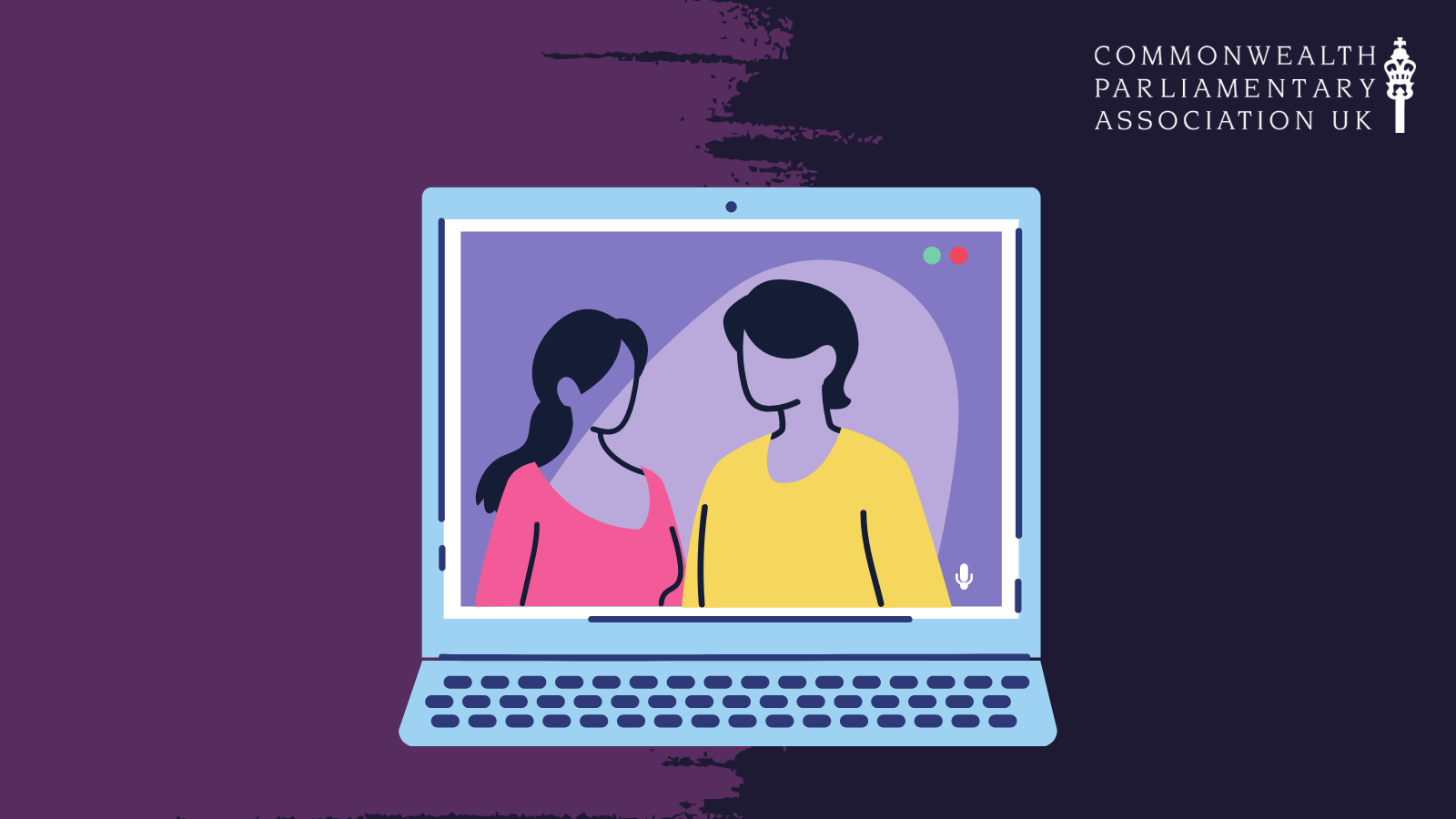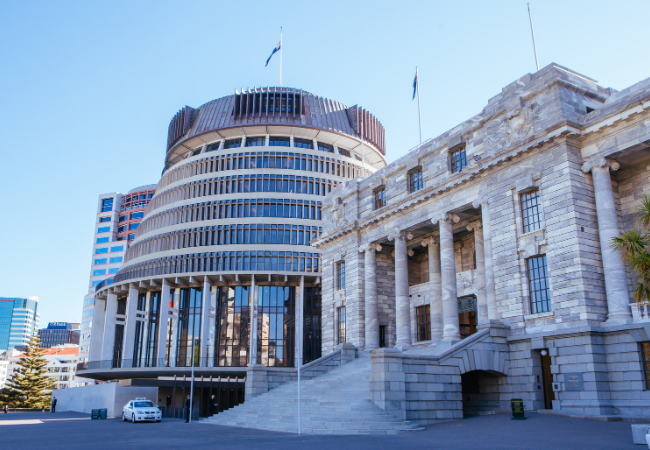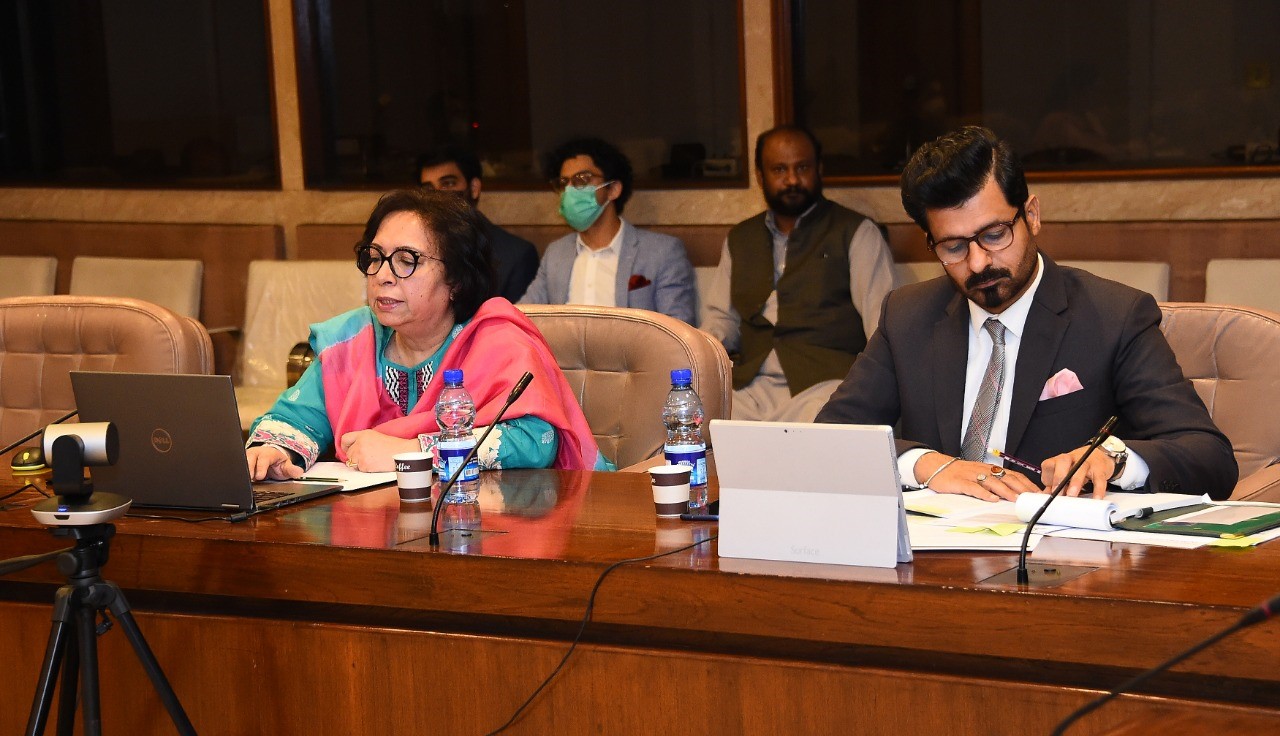Online violence against women parliamentarians hinders democracy, and all parliamentarians are responsible for addressing it
Published 14 June 2021
Click here to download CPA UK's Guide to Addressing Online Abuse, Published in July 2021
The use of information and communication technology is fast becoming a necessity for parliamentarians in fulfilling their mandates. Whether it be engaging with constituents on WhatsApp, sharing public information on Facebook or campaigning on Twitter – parliamentarians everywhere rely on technology as an essential method of political communication. For women parliamentarians, however, the experience of gender-based violence facilitated by such technology is the unjustified cost of their political participation online.

Across the Commonwealth, online violence against women parliamentarians is pervasive and endemic. From Canada, India, Kenya to the UK, it is reported globally that politically active women are disproportionately targeted by online violence, and disproportionately suffer the consequences as a result.
Research conducted by Amnesty International revealed that women in politics are 27 times more likely to face abuse online than their male counterparts. Women parliamentarians who belong to marginalised and/or minority communities are even further disproportionately targeted, with Amnesty estimating black women are 84% more likely to be mentioned in abusive tweets than their white counterparts.

(Research by Amnesty International found that women in politics are 27 times more likely to face online abuse compared to male counterparts)
Understanding online violence
Such violence takes many forms but can be broadly understood as “any act of violence that is committed, assisted by the use of information and communication technology, against a woman because she is a woman”[1]. This includes, but is not limited to, gender-based slurs and harassment, rape and death threats, ‘doxing’[2], non-consensual sharing of intimate images, and ‘deep fakes’[3].
While the causes of online violence against women are both varied and context specific, the existence of this modern form of violence must be understood within a broader scope of gender-based violence. Acts of violence against women online exist on a continuum with these acts offline.
For women in politics, such violence is both gender-based and political, used to reinforce gender inequality and deter women from being, or becoming, politically active.
There are a number of factors that render online violence against women distinctly unique. In contrast to the offline world, technology offers the possibility for abuse from any location; the ability for abusers to remain anonymous; the fast dissemination of harmful content; a breadth of audiences witnessing online abuse; and opportunities for abusers to join forces to organise online attacks.
Due to their increased visibility in the public eye, women parliamentarians are prominent targets, and therefore face a unique set of challenges that are a direct consequence of their gender identity, political participation, and presence online.
A barrier to democracy
Widespread recognition of these challenges has been far from universal across the Commonwealth. The discourse surrounding online violence against women has oftentimes been characterised by the mistaken belief that online violence is not a ‘real’ form of gender-based violence and is therefore less damaging than violence in the physical realm.
However, the accounts of women parliamentarians who have experienced such violence tell an entirely different story. This ranges from reports of emotional and psychological harm, harm to reputation, invasion of privacy, limitation of mobility, loss of property, often leading to physical and sexual harm offline.
For women parliamentarians, online violence can be relentless and accumulative in nature, having an extreme psychological impact over time. Importantly, research by Amnesty demonstrated that this often results in women in parliament self-censoring or stopping their online communications altogether, particularly around discussions of seemingly ‘controversial’ issues, such as women’s rights.
The Inter-Parliamentary Union’s study further revealed that the experience of online violence can hamper their ability to fulfil their mandates offline, and even prevent them from running for additional terms - by forcing a ‘choice’ between their mental health, safety or political career.
The harms caused by online violence are thus felt at a systemic level. Online violence serves to reinforce inequality and maintain discriminatory norms that limit women from living with freedom and realising their human rights, whilst compounding existing barriers to women’s full and active participation in democratic life.

Action by Commonwealth Parliaments
To date, online violence against women has not been comprehensively legislated against at the national level. Across the Commonwealth, there is a general reliance upon broader cybercrime legislation which is neither relevant with the advent of social media, nor adequately able to encompass the many ways in which modern technology can be utilised to perpetuate gender-based violence.
Research conducted by the Association for Progressive Communications revealed a prevailing culture of impunity around these human rights violations. Case studies from Kenya and Pakistan analysed in the research illustrated a non-efficacy of the law, including the investigation, prosecution, protection, and prevention of cases involving online violence against women.
A lack of appropriate legislation is often aggravated by gender blind implementation and an unwillingness to take online violence against women seriously. This produces an environment in which women parliamentarians are silenced, instead of encouraged, to share their views online.

(Plan International found that 58% of women have faced some form of online abuse by 22)
Progress in legislation
Several Commonwealth Member States have begun to adopt legislation targeting forms of online violence against women. For example, the New Zealand Parliament adopted a Harmful Digital Communications Act in 2015 aiming to deter, prevent and mitigate online harm. The Act provides for a new complaint mechanism to provide individual redress, as well as criminal penalties for serious breaches.
The Parliament of Australia also established an ‘eSafety Commissioner’ under the Enhancing Online Safety Act 2015, which has the power to give enforceable removable notices to social media services requiring the removal of harmful material or face significant financial penalties.
These examples of good practice are paving the way for other Commonwealth legislatures to take the issue of online violence seriously and provide a positive indication of how online spaces can be successfully regulated to enable women to participate politically without fear.
Freedom from the experience of online violence is not only essential for women parliamentarian’s full and effective democratic participation, it is also increasingly viewed as a fundamental human right. All Commonwealth parliamentarians have a responsibility to take action, and this action is long overdue.

https://www.uk-cpa.org/news-and-views/cpa-uk-report-paves-way-for-commonwealth-lawmakers-to-strengthen-legislation-on-gender-based-violence/
[1]Report of the Special Rapporteur on Violence against Women, Its Causes and Consequences on online violence against women and girls from a human rights perspective
[2] ‘Doxing’ refers to the publication of private information, such as contact details, on the internet with malicious intent.
[3] ‘Deep fakes’ refer to any video or image in which faces have either been swapped or altered with AI







